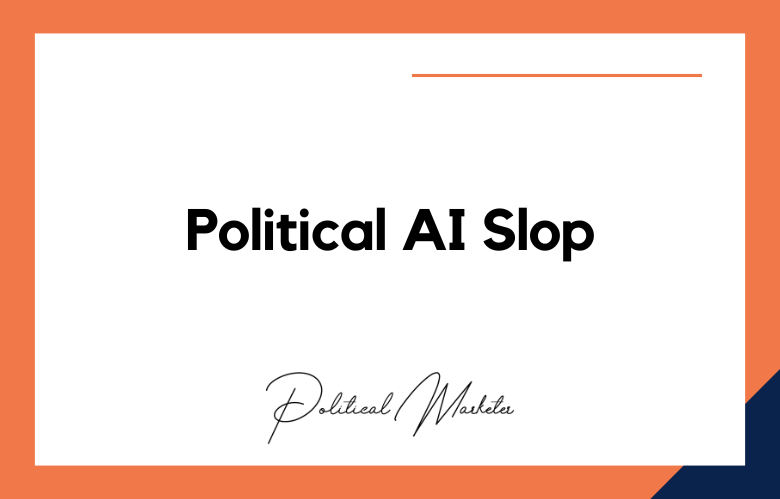Elections are the foundation of any democratic society, and fair elections are vital to maintaining a functioning democracy. But unfortunately, election fraud has become common in many countries worldwide. The good news is that artificial intelligence (AI) can be used to detect and prevent election fraud. , we will explore how AI can be used to ensure fair elections and discuss some of the challenges in implementing these technologies.
What is Election Fraud?
Election fraud can take many forms, from voter intimidation to ballot stuffing to hacking voting machines. These frauds can lead to election results that do not truly reflect the people’s will. Detecting and preventing election fraud is critical for maintaining the integrity of election results.
How AI Can Help Detect Election Fraud
AI can help detect election fraud by analyzing large amounts of data. For example, AI algorithms can analyze voter behavior, polling data, and social media activity to detect irregularities that could signal fraudulent behavior.
AI technology can also be used to monitor voting machines and detect any attempts at hacking or tampering. Machine learning algorithms can also be used to analyze election data from previous elections to identify patterns that could indicate election fraud and prevent it from happening in the future.
Challenges to Implementing AI in Election Fraud Detection
While AI has great potential for detecting and preventing election fraud, there are also some challenges in implementing these technologies. One challenge is the high cost of implementing these systems. Another challenge is ensuring the accuracy and reliability of the AI algorithms used. There is also a risk that AI algorithms could be manipulated or hacked, leading to false positives or negatives in election fraud detection.
Examples of AI Used for Election Fraud Detection
Several countries have already begun using AI for election fraud detection. For example, the Election Commission of India (ECI) used facial recognition technology to identify voters and prevent fraud during the 2019 Indian general elections. Similarly, Mexico’s National Electoral Institute (INE) used AI-powered video analytics to monitor polling stations and detect irregularities during local elections in 2019.
Securing Democracy: Leveraging AI to Detect and Prevent Election Fraud
As the world becomes increasingly connected and reliant on technology, the integrity of democratic institutions is more important than ever. One major challenge facing democracies worldwide is the threat of election fraud. Unfortunately, electoral fraud has been a persistent problem throughout history, and it can take many forms, from ballot stuffing to gerrymandering to disinformation campaigns.
In recent years, however, advances in artificial intelligence (AI) have provided a new opportunity to detect and prevent electoral fraud. AI has the potential to analyze large datasets, detect patterns and anomalies, and identify potential threats to the integrity of the voting process. We can gain insight into possible fraud mechanisms across multiple electoral systems and develop effective countermeasures by leveraging AI technologies.
Guarding the Vote: Harnessing AI Technology to Safeguard Elections
As the world becomes increasingly reliant on technology, so too have the methods of election tampering evolved. In recent years, numerous reports of foreign interference and cyber attacks on voting systems have raised concerns about the fairness and transparency of elections.
These incidents have highlighted the urgent need for more robust measures to safeguard the sanctity of the voting process. One potential solution lies in the application of artificial intelligence (AI) technology to the task of election security.
AI is a powerful tool that can detect and prevent various types of election fraud, including “deep fakes,” which refer to doctored images or videos made to look authentic. AI algorithms can be trained to analyze and compare photos and videos to identify inconsistencies or alterations that may indicate tampering. AI can detect and prevent attempts to manipulate elections through social media, such as spreading fake news and propaganda.
AI-Driven Solutions: Unmasking Election Fraud for Fairer Democracies
In recent years, concerns about election integrity have become increasingly prominent, with reports of election fraud and interference becoming more common. This trend is particularly concerning in light of the vital role that free and fair elections play in the democratic process. Many are turning to AI-driven solutions to address this issue to help unmask election fraud and ensure the democratic process is more transparent and trustworthy.
One of AI’s most promising ways to prevent election fraud is by analyzing voter data. By studying patterns in voter behavior and identifying anomalies that could indicate potential fraud, AI can help election officials quickly identify and investigate potential cases of election fraud.
In addition, AI can also be used to monitor social media and identify trends or campaigns designed to spread disinformation that could impact the outcome of an election.
Detecting Deception: How AI Can Help Identify Election Fraud
Election fraud is a growing concern in modern democracies. It undermines citizens’ trust in their electoral systems and can damage the legitimacy of elected officials. In recent years, there have been numerous instances of election fraud occurring around the world, ranging from ballot stuffing to manipulating electronic voting machines. Detecting such fraud is a complex task, often involving analyzing large amounts of data to identify patterns that indicate fraudulent activity.
This is where artificial intelligence (AI) can play a crucial role in helping to identify election fraud. AI algorithms can help to analyze large amounts of data quickly and accurately, making it easier to detect irregularities that may indicate foul play.
Machine learning algorithms can be trained to identify suspicious patterns in voting data, such as an unusually high number of votes for a particular candidate in a specific area. These patterns can be further analyzed to reveal potential instances of fraud, allowing authorities to take action to prevent such activities from happening again.
Uncovering Manipulation: AI’s Role in Preventing Election Fraud
Election fraud is one of the most severe threats to the democratic process, and governments worldwide should take steps to prevent it. As the world becomes increasingly digitized, so do the elections. However, with cyber threats on the rise, election integrity has become a critical concern. This is where AI (Artificial Intelligence) comes in.
AI can play a crucial role in preventing election fraud. It can detect anomalies, identify patterns, and uncover manipulations that are impossible to do manually. The AI algorithms can be used to spot any suspicious voting patterns, misuse of data, or any evidence of fraudulent activities. These algorithms can be trained to identify patterns that indicate fraudulent behavior.
Innovative Safeguards: Utilizing AI for Election Fraud Detection
Election fraud is a serious issue that can have dire consequences, such as undermining democratic processes and causing widespread mistrust of political institutions. Recently, many countries have implemented various safeguards to prevent and detect election fraud.
One of the most promising and innovative ways to detect election fraud is by utilizing Artificial Intelligence (AI). AI can learn patterns, recognize anomalies, and perform data analysis more quickly and accurately than humans. With the help of AI, it is possible to identify and prevent election fraud quickly.
AI algorithms can be designed to identify suspicious behavior or patterns inconsistent with routine electoral processes. These algorithms can be trained to recognize inconsistencies in voting patterns, such as sudden surges in support for a particular candidate or a party, too many absentee ballots, and multiple votes by the same individual.
Building Trust: Enhancing Election Security with AI
The significance of ensuring the security of our election process cannot be overstated. Elections are the cornerstone of our democracy and are crucial in shaping the future of our society.
In recent years, concerns about election security have been steadily increasing due to the rise of malicious actors seeking to undermine the democratic process. However, technology has the potential to enhance election security through the use of artificial intelligence (AI).
AI can detect and prevent election-related cyber attacks, such as voter fraud, hacking, and disinformation campaigns. For example, machine learning algorithms can analyze patterns in voter behavior and detect anomalies that may indicate fraudulent activity.
In addition, AI-powered cybersecurity systems can continuously monitor and analyze network traffic for suspicious activity, providing early warning signals and preventing attacks from gaining momentum.
Conclusion
In conclusion, election fraud is a severe problem that can undermine the integrity of a democratic society. AI technology can help detect and prevent election fraud, but there are also challenges in implementing these systems.
Nevertheless, as AI technology becomes more sophisticated and reliable, it will likely become an increasingly important tool for ensuring fair and transparent elections. By harnessing the power of AI, we can help safeguard the integrity of our democratic institutions and secure that everyone’s voice is heard in the public forum.
Call: +91 9848321284
Email: [email protected]
Frequently Asked Questions (FAQs)
What is AI-based election fraud detection?
AI helps identify irregularities in voting data, voter behavior, and polling infrastructure by analyzing patterns that may indicate tampering or unauthorized activities.
How does AI detect voter registration fraud?
It analyzes registration databases to flag duplicates, false identities, and unusual patterns that deviate from demographic or regional norms.
What is the role of machine learning in election security?
Machine learning models identify suspicious behavior by learning from historical election data and detecting anomalies in real time.
How does AI analyze voting patterns for signs of fraud?
AI compares turnout rates, ballot timings, and vote distributions across districts to identify statistical outliers indicative of fraud.
Can AI monitor misinformation during elections?
Yes. AI-powered tools scan digital platforms to detect and flag disinformation, coordinated campaigns, and voter suppression efforts.
How does AI enhance digital voting system security?
It monitors for cyberattacks, unauthorized access, and abnormal system behavior, improving the reliability of electronic voting infrastructure.
What is predictive modeling in election fraud prevention?
Predictive models assess past data to identify high-risk areas or groups, enabling proactive monitoring and intervention.
Can AI identify vote buying or coercion?
While not directly, AI can analyze social and voting behavior to uncover anomalies that may suggest vote-buying schemes or undue influence.
Is AI effective against deepfake political content?
Yes. AI uses computer vision and audio analysis to detect manipulated media, helping campaigns and platforms address deceptive content.
How does AI support ballot counting transparency?
Computer vision tools can scan and count ballots accurately, reducing human error and providing audit-ready digital records.
Can AI detect fraud in mail-in or absentee ballots?
AI evaluates envelope metadata, signature matches, ballot submission times, and voting trends to flag inconsistencies.
What data sources does AI use for election monitoring?
Common sources include voter databases, polling logs, video surveillance, voting machine outputs, and social media.
Can AI detect fraud in real time during elections?
Yes. AI tools operate during live voting periods, sending alerts when they detect unusual data or behavior.
What role does NLP play in election integrity?
NLP analyzes public communication—including news, social media, and voter feedback—to detect harmful narratives or misinformation.
Who benefits from AI-powered election monitoring?
Election commissions, cybersecurity teams, watchdog NGOs, political parties, and international observers use AI to improve oversight.
Does AI reduce human bias in fraud investigations?
Yes. AI offers data-driven analysis, minimizing subjectivity and enhancing the objectivity of investigations.
What are the ethical risks of AI in elections?
Risks include potential violations of privacy, algorithmic bias, lack of transparency, and misuse of voter data.
Are there limitations to using AI for election fraud detection?
AI may generate false positives or struggle with incomplete data or regional nuances that require human judgment to interpret.
How does AI complement traditional monitoring?
AI enhances traditional oversight by automating detection, surfacing anomalies, and supporting evidence-based audits.
What’s the future of AI in election security?
Future developments may include blockchain integration, decentralized monitoring systems, real-time dashboards, and more resilient AI models.










